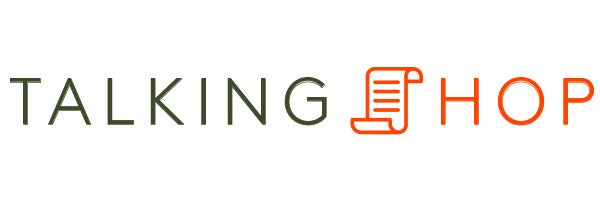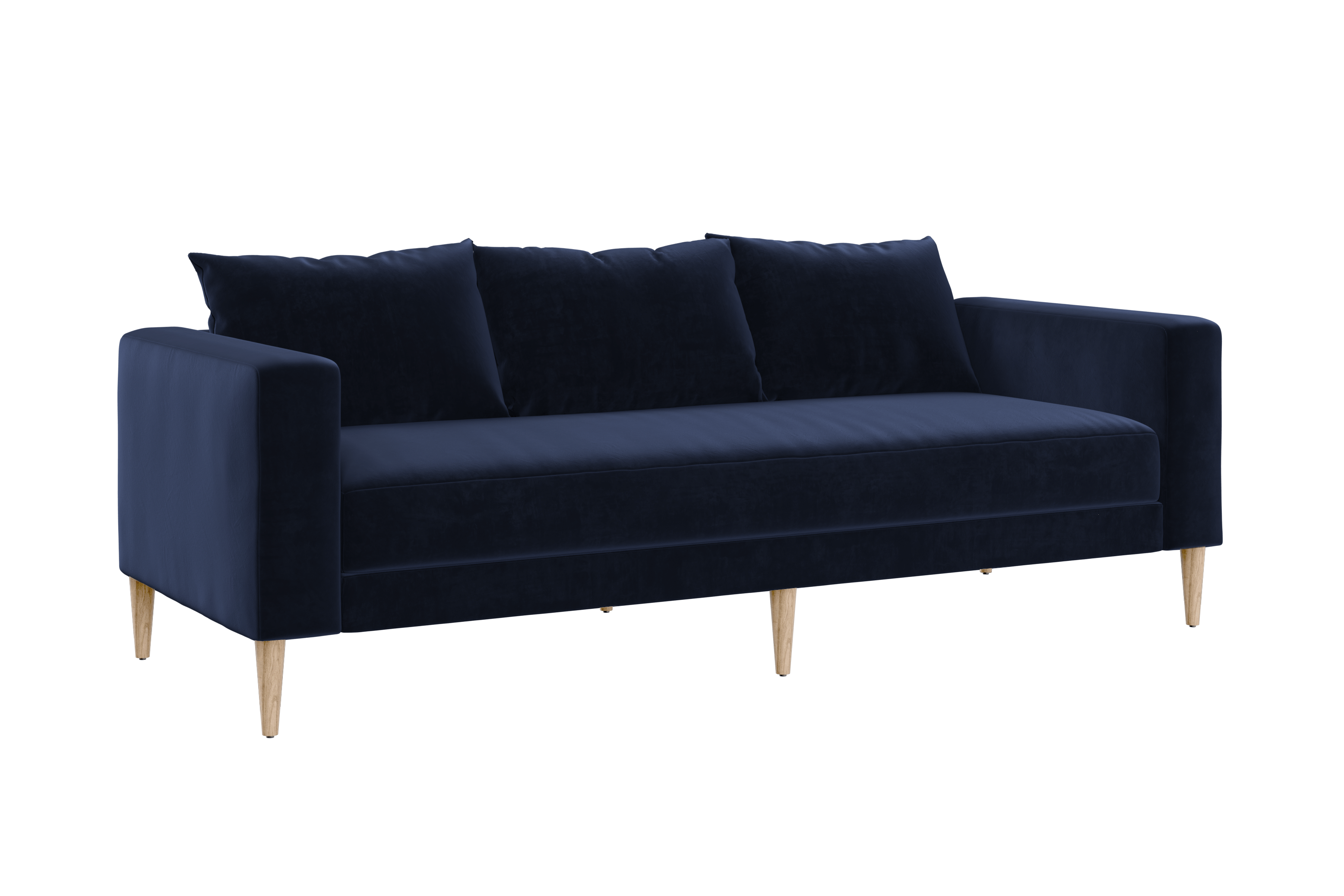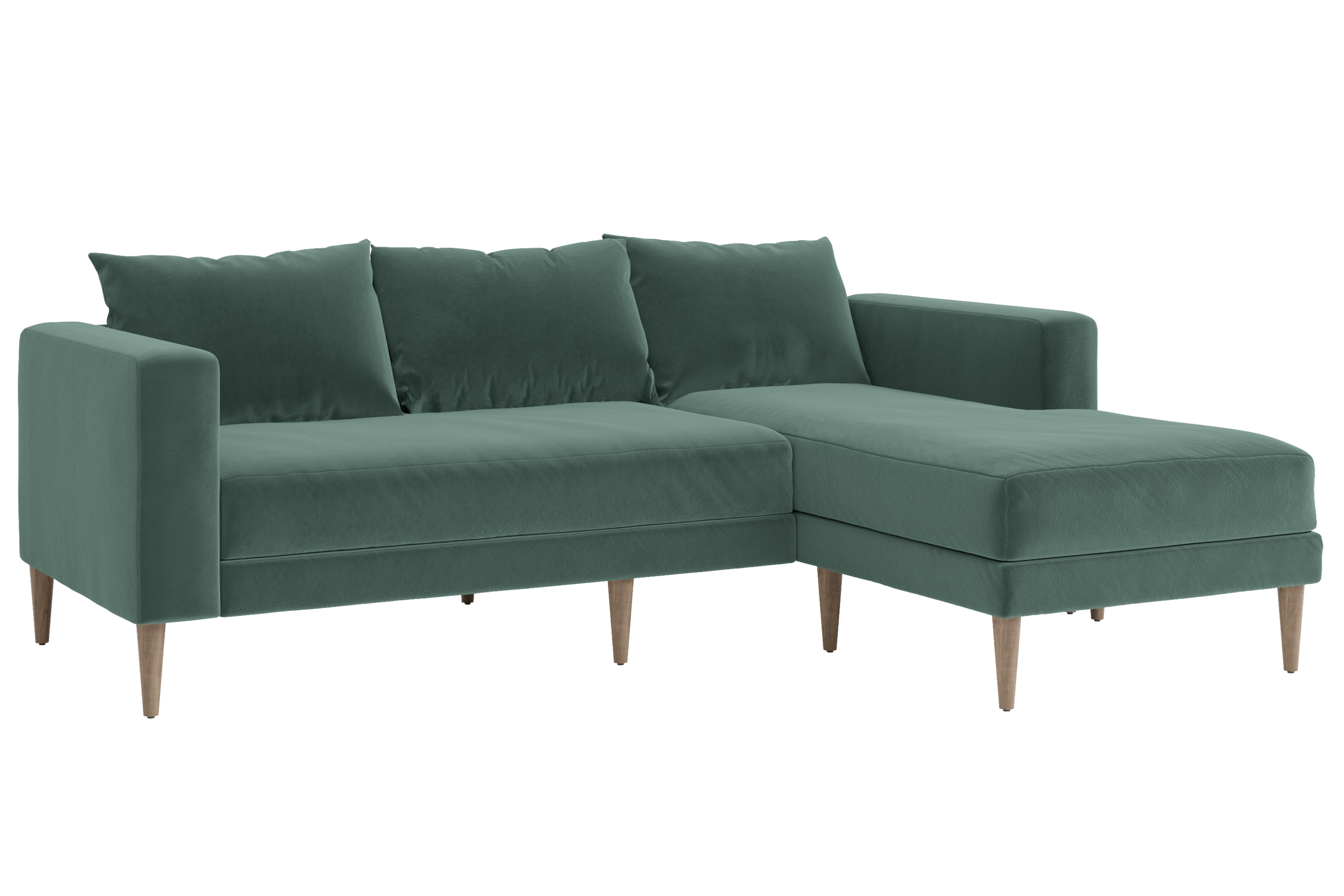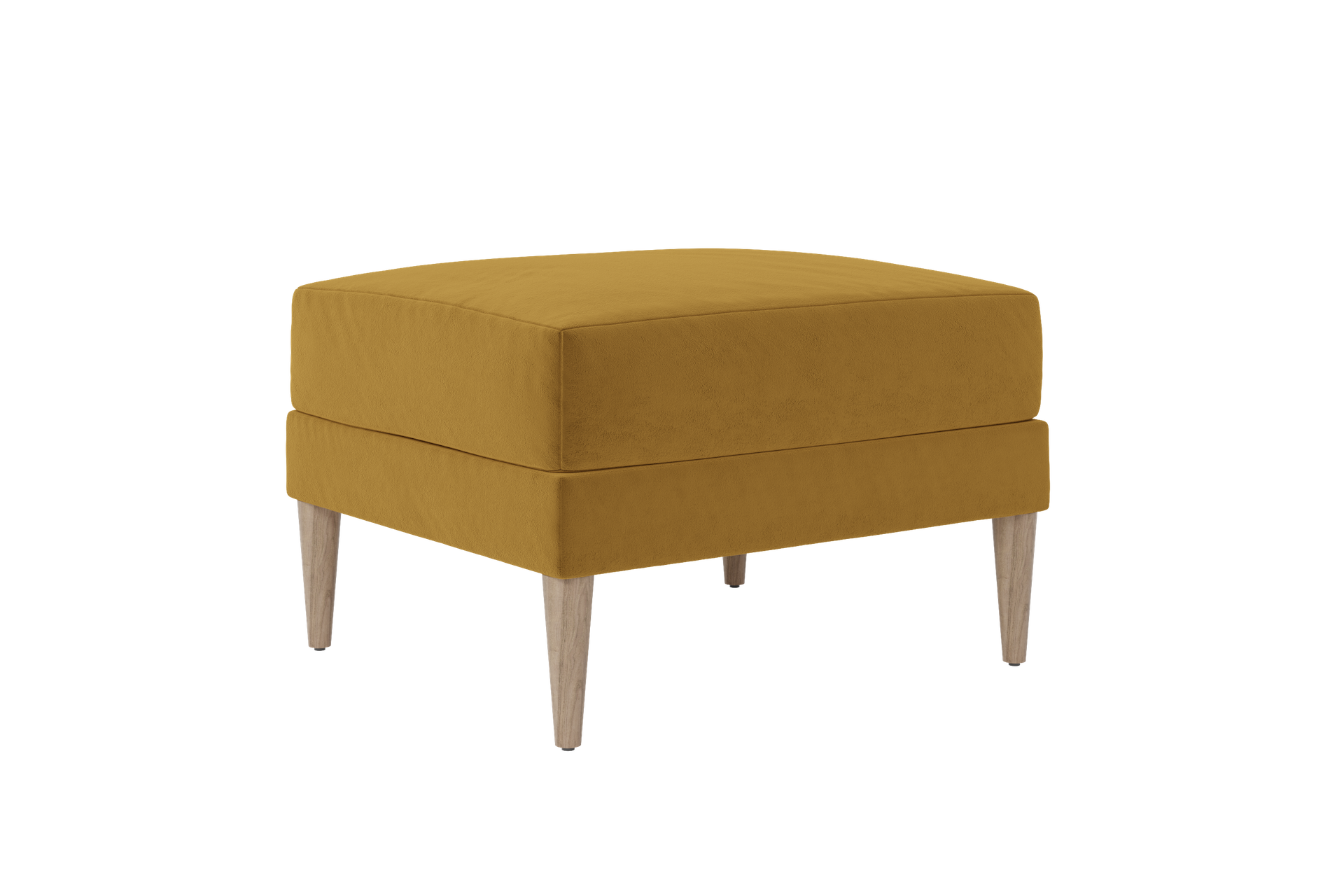How Sabai Design’s Founders Used Instagram To Build A Sustainable Furniture Brand
Couresty of Sabai
Sustainability is the word on all of our lips. As the climate crisis worsens with no universally supported plan to address it, the burden of saving the planet can feel like it's on the shoulders of individuals. Young people, in particular, are invested in making choices in their daily lives that won't do more harm to our planet, especially when it comes to important purchases. Unfortunately, those same young people don't always have the means to pay the premium price that often comes along with sustainable products. When it came time for her to decorate her first apartment after college, Phantila Phataraprasit was faced with this very challenge. This common obstacle led her and her business partner and friend Caitlin Ellen to found Sabai Design, a direct-to-consumer company that sells sustainable furniture at a relatively affordable price point.
AdvertisementADVERTISEMENT
In this edition of Talking Shop, Phataraprasit tells us how she and Ellen used Instagram to tap into what customers really look for in a furniture brand. She also shares how the pandemic has brought more consumers to the sustainable home goods space and the importance of making sustainable products more accessible.
Refinery29: Walk me through the process of launching Sabai Design.
Phantila Phataraprasit: Caitlin and I actually went to college together at Columbia. We were really great friends, but we had also worked together on starting a student-run credit union while there so our relationship already had a great foundation. We got along socially very well on a personal level, but at the same time, we knew we worked well together. On top of that, we both have very similar values and care a lot about sustainability, and in college, we had been incorporating that more and more into our daily lives in various ways. After we graduated and were furnishing our own apartments, creating our own spaces, and trying to do that in a way that aligned with our values, we realized that there just weren't a lot of options for people with our budget and values in mind. There were some sustainable furniture brands out there, but for the most part, they were incredibly high-end and not achievable for someone who's constrained with respect to their budget. That was how we came up with the idea. We knew that we were part of a growing demographic of people who cared a lot about our impact on the environment and we were willing to pay a premium but weren't able to buy such high-end items.
Phantila Phataraprasit: Caitlin and I actually went to college together at Columbia. We were really great friends, but we had also worked together on starting a student-run credit union while there so our relationship already had a great foundation. We got along socially very well on a personal level, but at the same time, we knew we worked well together. On top of that, we both have very similar values and care a lot about sustainability, and in college, we had been incorporating that more and more into our daily lives in various ways. After we graduated and were furnishing our own apartments, creating our own spaces, and trying to do that in a way that aligned with our values, we realized that there just weren't a lot of options for people with our budget and values in mind. There were some sustainable furniture brands out there, but for the most part, they were incredibly high-end and not achievable for someone who's constrained with respect to their budget. That was how we came up with the idea. We knew that we were part of a growing demographic of people who cared a lot about our impact on the environment and we were willing to pay a premium but weren't able to buy such high-end items.
AdvertisementADVERTISEMENT
Couresty of Sabai
We really believed that there was a market for this, a really big demand for this, and that this was something that a lot of people wanted to participate in. With respect to how we then proceeded, I was actually a law student at the time at NYU, and NYU actually has a great network of support for entrepreneurs — there's an entrepreneurship lab and things like that. We were very engaged with their different programming and they placed a lot of emphasis on customer discovery and speaking to your customer so that's the focus we had going into this. We started interviewing a ton of people to understand what they looked for, what they cared about, what their priorities were, what they would be able to spend, and what they wanted to spend. Since the beginning, it was very consumer-centric in terms of trying to understand and make sure we were making a product that people wanted and that aligned with what people cared about since that was the whole purpose of starting this company anyway. We started an Instagram account that served as a great tool to leverage our community to understand what they cared about. When we started the design process, we would always go back to the Instagram community and poll them on, "What do you use your couch for?" "Do you like wide arms?" "Do you like thin arms?" It seems so simple in terms of, obviously, a couch is for sitting, but the insights that we received from that were helpful in informing the design process.
AdvertisementADVERTISEMENT
Couresty of Sabai
I think one of the hardest parts in the initial phase for us was going about finding manufacturers and suppliers. It was definitely difficult for two relatively young women who had never started this type of company before and in a relatively traditional space to find any factory that was willing to work with us and basically take a bet on us. It took a really long time, meeting a lot of different people, getting referred to other people, talking to them, and pitching to them. When we finally did find a manufacturer who wanted to work with us, that was amazing, but at the same time, sustainable manufacturing and using sustainable supplies is not the default by any means for most manufacturers so then came the task of finding all the suppliers ourselves. Usually, if you wanted to make a piece of furniture, you would just go to a manufacturer, tell them what you want, and they would make it, but for us, we really had to go out and source all the different components of our piece. We had to find the sustainable alternatives to every component of the product so that was definitely a whole process in and of itself.
Concurrently, we were going through our branding, making sure our messaging was coming across, and building our website. Then we launched in the summer of 2019.
Concurrently, we were going through our branding, making sure our messaging was coming across, and building our website. Then we launched in the summer of 2019.
You mentioned you attended Columbia for undergrad and NYU for law school, did you receive any formal training in business?
I have not had any formal training in business specifically, but I studied political science and economics in undergrad, and I worked in finance for a year before going to law school. I do also come from a very entrepreneurial family, so I've grown up around that and have always had that mindset when it comes to looking at the world. I was always actively thinking about different ideas for companies when I encountered things in my daily life that I felt could be improved upon. That was the genesis of Sabai — it was just one of the ideas that I came up with that really stuck with me. After months and months of it really sticking with me and continuously thinking about it, I knew it was something that I wanted to pursue.
I have not had any formal training in business specifically, but I studied political science and economics in undergrad, and I worked in finance for a year before going to law school. I do also come from a very entrepreneurial family, so I've grown up around that and have always had that mindset when it comes to looking at the world. I was always actively thinking about different ideas for companies when I encountered things in my daily life that I felt could be improved upon. That was the genesis of Sabai — it was just one of the ideas that I came up with that really stuck with me. After months and months of it really sticking with me and continuously thinking about it, I knew it was something that I wanted to pursue.
AdvertisementADVERTISEMENT
Do you practice law now in addition to running Sabai?
I graduated from law school in May and am working full-time on Sabai now. I do handle the legal side of things for us, in conjunction with external lawyers, but I'm not at a law firm.
I graduated from law school in May and am working full-time on Sabai now. I do handle the legal side of things for us, in conjunction with external lawyers, but I'm not at a law firm.
I would think that a law degree is very, very helpful in the day-to-day of running a business.
Yeah, definitely. The law is everywhere so it comes in handy in terms of contracts and everything. It also just teaches you to think in another way so it's been helpful to have that perspective.
Yeah, definitely. The law is everywhere so it comes in handy in terms of contracts and everything. It also just teaches you to think in another way so it's been helpful to have that perspective.
Couresty of Sabai
Have you received any funding for the business? If so, what kind?
It's all been friends and family up until this point. It was friends and family for the first year. In terms of our approach to building the company and our pricing and everything like that, we wanted the company to be profitable and sustainable — not just in the environmental sense, but sustainable as a business. I know that's not the approach a lot of direct-to-consumer companies take nowadays in terms of growing at the expense of profitability, but that was a value for us since the beginning. We've actually been profitable for the past year and now we're just funding our own growth.
It's all been friends and family up until this point. It was friends and family for the first year. In terms of our approach to building the company and our pricing and everything like that, we wanted the company to be profitable and sustainable — not just in the environmental sense, but sustainable as a business. I know that's not the approach a lot of direct-to-consumer companies take nowadays in terms of growing at the expense of profitability, but that was a value for us since the beginning. We've actually been profitable for the past year and now we're just funding our own growth.
That’s awesome! Obviously, you and Caitlin started Sabai together, but what does your team look like now? How many employees do you have and are you looking to grow that number?
Caitlin, my co-founder, is working part-time on Sabai, I'm full-time now since I graduated, and we have one other employee who had been working with us part-time since the beginning of the year but recently joined us as a full-time employee. We also have an intern and someone else that helps us with the operations, but those are part-time positions. We found that it's been really helpful to have people who are really good at what they do, which at our stage might not be a full-time role. It's just been more efficient and helpful for us to do it that way.
We're definitely growing but slowly. I think that we just want to be cautious about that and not get ahead of ourselves. We definitely have a lot of goals and ambitions. It's always that kind of chicken-and-egg thing where you need people to grow, but you don't want to hire people before you grow if you aren't able to actually pay them. We hired Sophie in September and are bringing someone on part-time, for example, for our customer service role, and I think that as we grow, if those roles require a full-time individual, then we'll convert those people to full-time.
Caitlin, my co-founder, is working part-time on Sabai, I'm full-time now since I graduated, and we have one other employee who had been working with us part-time since the beginning of the year but recently joined us as a full-time employee. We also have an intern and someone else that helps us with the operations, but those are part-time positions. We found that it's been really helpful to have people who are really good at what they do, which at our stage might not be a full-time role. It's just been more efficient and helpful for us to do it that way.
We're definitely growing but slowly. I think that we just want to be cautious about that and not get ahead of ourselves. We definitely have a lot of goals and ambitions. It's always that kind of chicken-and-egg thing where you need people to grow, but you don't want to hire people before you grow if you aren't able to actually pay them. We hired Sophie in September and are bringing someone on part-time, for example, for our customer service role, and I think that as we grow, if those roles require a full-time individual, then we'll convert those people to full-time.
AdvertisementADVERTISEMENT
Couresty of Sabai
What is a small business to you?
I think to us, a small business is really a business that's started by individuals — real people and not just an arm of a large company. It's a business that's started by individuals and owned — not necessarily entirely — by individuals who care about what they're putting out in the world.
I think to us, a small business is really a business that's started by individuals — real people and not just an arm of a large company. It's a business that's started by individuals and owned — not necessarily entirely — by individuals who care about what they're putting out in the world.
You've already mentioned a few huge obstacles you faced in launching Sabai, but what would you say has been the biggest business challenge you've faced so far?
Broadly, I would say the biggest challenge for us is both a fun thing and a sometimes very frustrating thing. It's how flexible and dynamic we have to be in terms of solving problems and making sure that our company is positioned well within certain parameters. Things are always changing, and we keep having to adjust our product or the way our business runs to be able to run well. More tangibly, one example is shipping. With such a large product like a sofa, our products are flat-packed so we really had to work around the shipping constraints and all those formulas for large packages. That was already such a difficult process, but on top of that, those rates and those equations aren't stagnant so when those change, we also have to readjust. It's exciting because we're always trying to innovate and improve, but it's also a big challenge because we're never really done with any problem.
Broadly, I would say the biggest challenge for us is both a fun thing and a sometimes very frustrating thing. It's how flexible and dynamic we have to be in terms of solving problems and making sure that our company is positioned well within certain parameters. Things are always changing, and we keep having to adjust our product or the way our business runs to be able to run well. More tangibly, one example is shipping. With such a large product like a sofa, our products are flat-packed so we really had to work around the shipping constraints and all those formulas for large packages. That was already such a difficult process, but on top of that, those rates and those equations aren't stagnant so when those change, we also have to readjust. It's exciting because we're always trying to innovate and improve, but it's also a big challenge because we're never really done with any problem.
Right. On the flip side of that, what would you say has been your biggest business win?
When you're starting something or running something, it can definitely feel like you're in the dark with respect to whether it's working or not or if this is what people actually want, so anytime there's a moment of clarity and validation, it always feels amazing. I can think back to last summer when we first launched, we had, of course, been telling all our friends about Sabai, but when we launched the website, we were only running really light ads when we were doing pre-orders. I remember when we got our first sale from a complete stranger — someone who wasn't through a friend or a friend of a friend or a friend supporting us or a family member. I remember Caitlin and I texting each other, jumping up and down, and being really excited about that. That was definitely a big win. Even though it's relatively small, it was our first win so I definitely remember that.
When you're starting something or running something, it can definitely feel like you're in the dark with respect to whether it's working or not or if this is what people actually want, so anytime there's a moment of clarity and validation, it always feels amazing. I can think back to last summer when we first launched, we had, of course, been telling all our friends about Sabai, but when we launched the website, we were only running really light ads when we were doing pre-orders. I remember when we got our first sale from a complete stranger — someone who wasn't through a friend or a friend of a friend or a friend supporting us or a family member. I remember Caitlin and I texting each other, jumping up and down, and being really excited about that. That was definitely a big win. Even though it's relatively small, it was our first win so I definitely remember that.
AdvertisementADVERTISEMENT
This past summer has also been really huge for us in terms of growth. I think generally Covid has actually been good in terms of sales for the furniture space. People are home obviously, and re-furnishing, but on top of that, I think people are trying to be a little bit more conscious about what they're putting in their homes and what they're buying. So we saw a lot of growth and a lot of support this past summer, not only through sales but also through dialogue on our Instagram. That was a big win for us because it confirmed that people care about this and that this is something people really want.
Couresty of Sabai
I love how much you all use Instagram to keep in touch with your base. That seems to be a recurring tool for Sabai.
Yeah. It's something that we started using from the onset, which was super helpful, not only in terms of connecting with our community but also just making sure that we were making a product that was something people wanted so it lowered risk on that end. On top of that, although sustainable furniture isn't new, it is a new concept to a lot of people so there is a lot of education that can be done around it. I think anything that does require or offers an opportunity for education also comes with a community. So now, Instagram provides us with the ability to have a lot of engagement with our community and talk about sustainability, sustainable furniture, and what that means to different people.
Yeah. It's something that we started using from the onset, which was super helpful, not only in terms of connecting with our community but also just making sure that we were making a product that was something people wanted so it lowered risk on that end. On top of that, although sustainable furniture isn't new, it is a new concept to a lot of people so there is a lot of education that can be done around it. I think anything that does require or offers an opportunity for education also comes with a community. So now, Instagram provides us with the ability to have a lot of engagement with our community and talk about sustainability, sustainable furniture, and what that means to different people.
What is your ultimate goal with your business?
I think our ultimate goal is to enable anyone who wants to live sustainably to do so and to do so all around. It's not just about the product and how it's made. We want to ensure that we are transparent with our customers and community and show that we're thinking about every aspect — the manufacturing, the materials, and the end-of-life cycle. We're really building a very comprehensively sustainable brand that allows sustainability to be accessible to everyone.
I think our ultimate goal is to enable anyone who wants to live sustainably to do so and to do so all around. It's not just about the product and how it's made. We want to ensure that we are transparent with our customers and community and show that we're thinking about every aspect — the manufacturing, the materials, and the end-of-life cycle. We're really building a very comprehensively sustainable brand that allows sustainability to be accessible to everyone.
AdvertisementADVERTISEMENT










